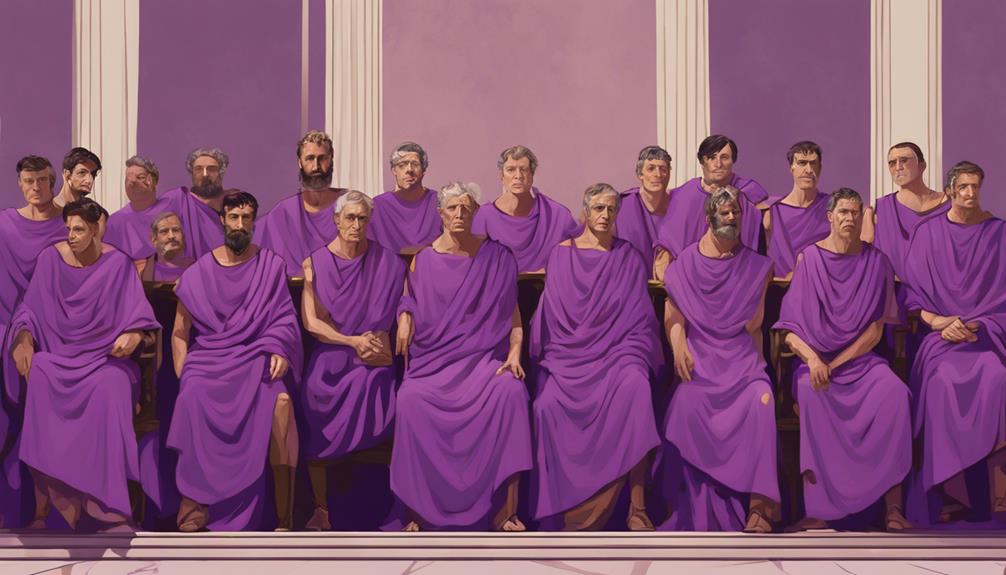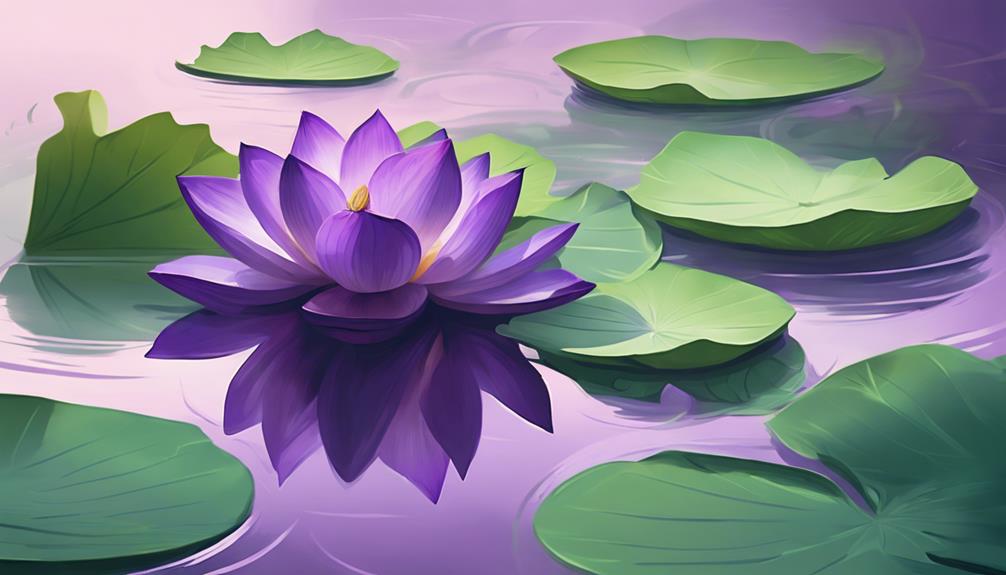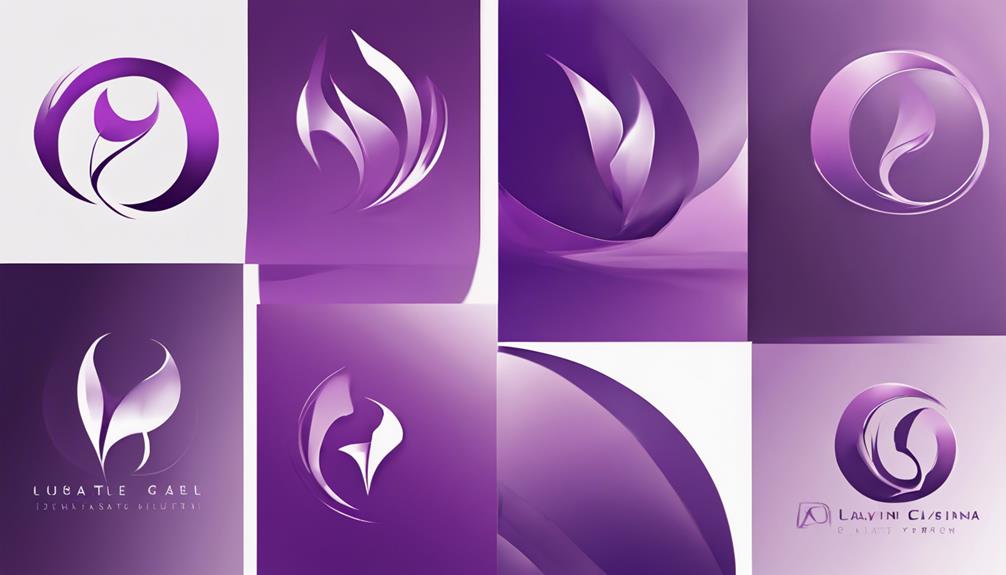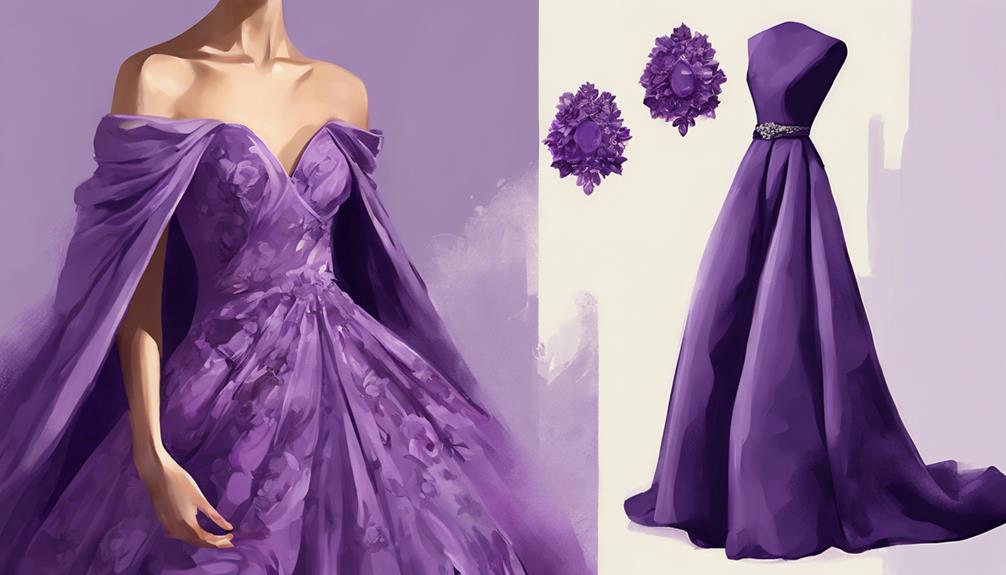Summary
- 1 Historical significance of the color purple
- 2 Cultural representations and traditions
- 3 Purple in Psychology and Spirituality
- 4 Symbolism of the color purple in art
- 5 Violet in Marketing and Branding
- 6 The effect of the color purple on emotions
- 7 Purple in fashion and design
- 8 Frequently asked questions
- 8.1 What are some famous places or buildings known for their use of purple?
- 8.2 Can purple be used effectively in interior design for small spaces?
- 8.3 Are there any superstitions or myths associated with the color purple?
- 8.4 How has the perception of the color purple changed throughout different historical eras?
- 8.5 What are some unique ways to incorporate purple into weddings or special events?
Surrender to the regal allure of purple, a symbol of power and luxury in ancient civilizations. This hue carries with it a spiritual essence, sparking creativity and introspectivity. In art, it weaves a tale of mystery and sophistication, igniting a sense of wonder. Delve into how purple invokes emotions of curiosity and imagination, taking you on a journey through its rich history and cultural implications.
Historical significance of the color purple

Discover the rich historical significance of the color purple and its fascinating journey through time. Purple has long been associated with royalty and power because of the color's rarity and cost in ancient civilizations. The Phoenicians were among the first to create a purple dye from the mucus of sea snails, a process so laborious that it became a symbol of wealth and status. In ancient Rome, only the elite could afford purple clothing, further solidifying its regal connotations.
The color's connection to spirituality and mysticism is equally profound. In Byzantine times, purple was connected to the divine and reserved for religious figures. The association with nobility continued through the Renaissance, where purple denoted luxury and extravagance in art and fashion.
From the majestic robes of emperors to the sacred robes of priests, purple has maintained its appeal and prestige throughout history. Its journey from a symbol of wealth to a representation of spiritual depth shows the enduring power and significance of this enigmatic color.
Cultural representations and traditions
We now investigate how the purple color has importance in various cultures around the world. From the symbolism of royalty to spiritual rituals, purple plays a unique role in various traditions. Understanding these cultural representations can provide a deeper insight into the rich variety of meanings associated with the color purple.
Symbolism in cultures
Investigates how different cultures around the world attach unique meanings and relevance to the color purple in their cultural representations and traditions. In various cultures, purple has been associated with royalty, luxury, and spirituality. For example, in ancient Rome, the color purple was incredibly expensive to produce, making it reserved for the elite, symbolizing power and wealth. In Japan, purple is linked to the delicate beauty of the wisteria flower, symbolizing love, sensitivity and elegance.
In Thailand, purple is linked to mourning and is worn during funeral rites for King Bhumibol Adulyadej, showing reverence and respect for the late monarch. In some African cultures, purple represents wealth, prosperity and status, illustrating the different interpretations of the color in different societies. Understanding how purple is perceived in various cultures sheds light on the rich variety of meanings colors can have, showing the depth and complexity of human symbolism and traditions.
Rites and symbolism
We explore how various cultures around the world incorporate rituals and symbolism around the color purple, reflecting the unique values and traditions held in different societies. In ancient Rome, purple dye was so rare and expensive that only the elite could afford it, making it a symbol of wealth and status. The Byzantine Empire associated purple with royalty, and emperors wore purple robes to signify their power. In Japan, purple is connected to the delicate beauty of cherry blossoms, representing ephemeral nature and the cycle of life.
In some African cultures, purple is connected to spirituality and is worn during rituals and ceremonies to symbolize connection with the divine. In Thailand, purple is the color of mourning, expressing grief and sadness. In modern Western cultures, purple is often associated with creativity and imagination, with artists and musicians using it to evoke a sense of mystery and inspiration. Throughout the world, the color purple continues to hold diverse meanings and play significant roles in various rituals and symbolic practices.
Purple in Psychology and Spirituality

Now, let's dive into the fascinating field of purple in the psychology and spirituality! Discover intriguing psychological associations with this enchanting color and reveal its deep spiritual significance. Get ready to discover how purple affects our minds and souls in unique and profound ways.
Psychological associations with the color purple
In the world of psychology and spirituality, the color purple has significant meaning and symbolism that can deeply influence your emotions and mindset. Purple is often associated with creativity, imagination and wisdom. Psychologically, it is believed to have a calming effect on the mind, promoting mental balance and stability. The color purple is also linked to introspection, encouraging self-reflection and spiritual awareness.
From a psychological perspective, purple is believed to stimulate imagination and inspire high ideals. It is a color that can arouse feelings of mystery and fascination, prompting you to further explore your thoughts and emotions. Purple is often used in therapy to foster a sense of tranquility and encourage deeper investigation of one's inner self.
From a spiritual perspective, purple is often connected to higher consciousness and spiritual growth. It is seen as a color that can help you connect with your intuition and inner wisdom. Integrating purple into your environment or clothing can help create a sense of peace and harmony within you.
Spiritual meaning of purple
The spiritual significance of purple delves into the realm of the higher consciousness and of the inner wisdom, offering a deep connection to intuition and spiritual growth. In psychology and spirituality, purple is often associated with mystery, magic and the esoteric. It is a color that promotes the contemplation and introspection, helping you explore your inner spirituality and connect with the universe on a deeper level.
Psychologically, purple is related to the subconscious mind and theexpansion of awareness. It is believed to open the mind to new possibilities and spiritual experiences. The color purple can also be calming and reassuring, creating a sense of peace and tranquility that is conducive to meditation and spiritual practices.
Spiritually, purple is often associated with the chakra Of the crown, which is the center of illumination and the spiritual connection. It is a color that symbolizes transformation, spiritual awakening and the journey to higher consciousness. Embracing purple in your life can help you align with your spiritual path, enrich your intuition and foster personal growth and self-discovery.
Symbolism of the color purple in art
In the art world, purple often conveys a sense of mystery and royalty through its deep, regal hue. Artists of all ages have used purple to evoke a range of emotions and symbolism in their works.
In art, purple is frequently associated with creativity, wisdom and spirituality. It is a color that can evoke a sense of introspection and contemplation. The richness of purple's hues can create a feeling of luxury and sophistication in a work, making it a popular choice for depicting royalty or the divine.
The dual nature of purple, being simultaneously warm and cool, allows artists to play with contrasts and harmonies in their compositions. It can symbolize power, ambition and excess, adding depth and complexity to the artwork.
Whether used subtly as an accent or as the focal point of a work, purple in art invites viewers to explore its enigmatic appeal, arousing curiosity and fascination with its symbolic meanings and emotional resonance.
Violet in Marketing and Branding

How does the color purple affect marketing strategies and branding decisions? Purple is often associated with creativity, luxury, and sophistication, making it a popular choice for brands that wish to convey a sense of elegance and uniqueness. In marketing, purple can be used to appeal to specific audiences that value creativity and innovation. Many technology brands, beauty brands, and luxury products incorporate purple into their branding to distinguish themselves from competitors and attract a more artistic or imaginative consumer base.
Purple can also evoke a sense of mystery and nostalgia, which can be leveraged in marketing campaigns to create a sense of intrigue and capture the audience's attention. When used strategically, purple can help brands establish a strong emotional connection with consumers and differentiate themselves in a crowded marketplace.
The effect of the color purple on emotions
When you see the color purple, it can evoke a range of emotions and feelings because of its unique and complex symbolism. Purple has a fascinating impact on your emotions, influencing the way you perceive the world around you. Here's how this enigmatic color can affect your feelings:
- Creativity: Purple is often associated with creativity and imagination. It has the power to inspire you to think innovatively and discover new ideas.
- Spirituality: The color purple is connected to spirituality and mindfulness. It can create a sense of inner peace and connection with the spiritual domain.
- Luxury: Purple has long been associated with royalty and luxury. When you see this color, it may evoke feelings of elegance, sophistication and opulence.
- Mystery: The association of purple with mystery and intrigue can arouse a sense of curiosity and wonder. It can make you ponder the unknown and welcome the magic of the world.
Next, we will explore how the color purple influences fashion and design.
Purple in fashion and design

Investigate how purple contributes a touch of elegance and vitality to the world of fashion and design. Purple is a versatile color that can add a sense of luxury and creativity to any design or outfit. In fashion, purple is often associated with royalty and sophistication. Designers frequently incorporate shades of purple into their collections to evoke a sense of opulence and glamour. Whether it is a deep plum dress for a formal event or a lavender blouse for a casual outing, purple can enrich any look with its regal appeal.
In interior design, purple is used to create a sense of luxury and modernity. From rich velvet sofas to delicate lavender accents, purple can transform a space into an elegant oasis. Whether you prefer a declared purple piece or subtle hints of lilac throughout your home, this color can bring a unique touch to any room. The next time you are looking to add a touch of elegance and vitality to your wardrobe or living space, consider incorporating a shade of purple to enhance your style.
Frequently asked questions
What are some famous places or buildings known for their use of purple?
There are numerous iconic monuments and buildings celebrated for their use of the color purple. From the majestic Burj Al Arab in Dubai to the lovely Neuschwanstein Castle in Germany, shades of purple add a touch of royalty and uniqueness to these structures. Let's not forget the vibrant Purple Wall at Disney World's Magic Kingdom, a photo landmark. These monuments show the versatility and appeal of the color purple in architecture.
Can purple be used effectively in interior design for small spaces?
Purple can work miracles in the small spaces. It adds depth and sophistication without overloading the area. Consider using lighter shades such as lavender or lilac to create a light feel. Accent with darker purples in strategic places to add contrast. Don't be afraid to experiment with different textures and motifs to make the space feel dynamic. In general, purple can definitely be an elegant choice for interior design in small spaces if used carefully.
Are there any superstitions or myths associated with the color purple?
Regarding superstitions or myths about the color purple, there are actually some interesting beliefs around. From ancient times to modern days, purple has been linked to the royalty, at the magic, and to mystery in various cultures. Some see it as a color of power and luxury, while others associate it with spirituality or creativity. So yes, there are definitely superstitions and myths surrounding the color purple worthy of investigation!
How has the perception of the color purple changed throughout different historical eras?
Throughout history, the perception of purple has changed dramatically. In ancient times, purple was reserved for the nobility because of its rarity and cost. During the Renaissance, it symbolized wealth and power. In the 20th century, it became associated with creativity and the countercultural movements. Today, purple is often seen as a color of luxury and spirituality. Its evolution reflects changes in social values and cultural influences over time.
What are some unique ways to incorporate purple into weddings or special events?
When planning weddings or special events, consider incorporating purple in unique ways. From elegant purple floral arrangements to striking purple lighting, this versatile color can add a touch of royalty and sophistication to your celebration. Don't forget purple tablecloths, purple bridesmaid dresses or even a signature purple cocktail party. Let your imagination run wild and infuse your event with the enchanting allure of purple for a memorable and stylish touch.
